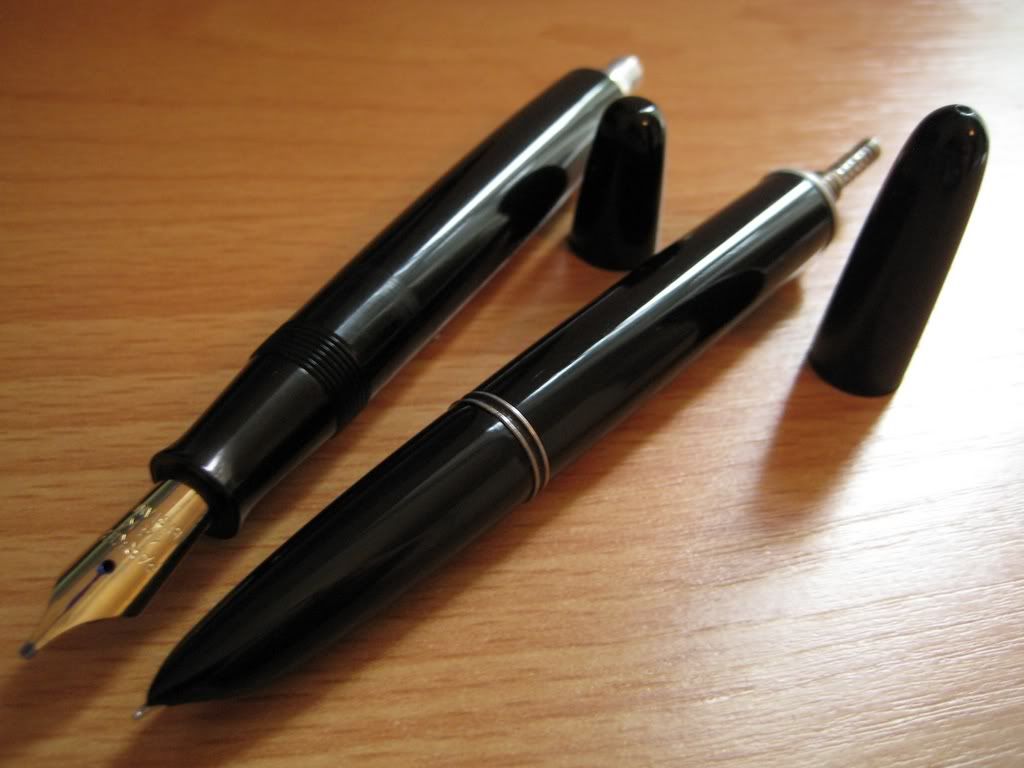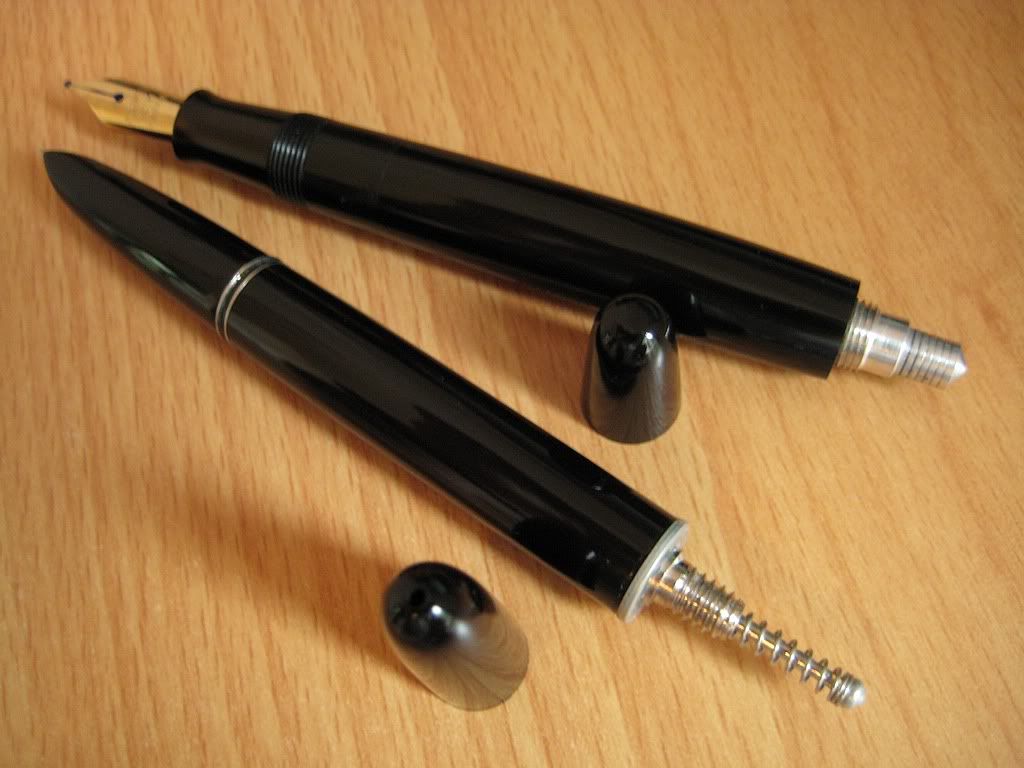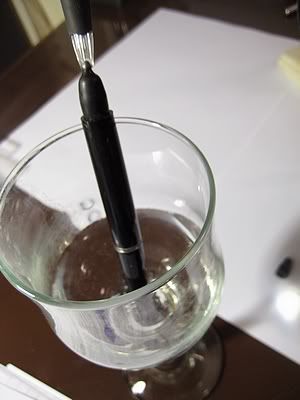 |
| A Hero 616 Jumbo with vacumatic filler, and a button filling Parker Duofold in the background. |
Whether flattering a wealthy dowager, placating an avaricious utility company with speculative cheques, or forging a letter of recommendation, nothing conveys sincerity and dependability quite like a good fountain pen. But this noble instrument doesn't have to cost the earth! In these straitened times, the pen's cost needn't ever exceed the sum being negotiated.
In a salute to both Parker's innovative, long discontinued 'vacumatic' fountain pens and Shangai Hero Finished Pens & Fine Chemical Products inexpensive "616" series, the following posts detail an attempt to build a vacumatic filler, and retrofit it in a modern Hero 616 Jumbo. These will likely be the last mindthots regarding the Hero 616 and hopefully end the series on a high.
 |
| The Vac 616's plunger stem, and the Duofold's filler button. |
- Is much easier to make.
- Doubles the ink capacity, to 1.5ml in addition to anything left in the collector.
- Has a conventional blind cap.
- Is 17.34% more fun to operate.
The YouTube clip embedded below shows off the completed pen. As before, I've split this write-up into separate posts for ease of reference, each a short step in the conversion process.
This Introduction - scroll down to read on, or click the following headings to skip ahead.
Parts and Tools - what was used to vacumatificate the 616 Jumbo. If you haven't already got silicon sealant, this conversion works out twelve pence more expensive than the earlier button filler; if you do, about 4 pounds less expensive.
Cutting the Blind Cap - slicing the end off the barrel, and installing a threaded insert in the end piece so it can screw on and off.
The Filler Housing - making up the unit incorporating the plunger stem, return spring, steel barrel end piece, blind cap retaining thread, and internal connection to the diaphragm pellet holder.
The Filler Plunger - constructing the pellet holder and attaching it to the plunger stem. The pellet holder affixes the rubber diaphragm to the plunger rod, in about as unlikely a fashion as I could imagine. This is the easiest step in an easy conversion, requiring minimal time or effort.
Fitting the Diaphragm - attaching the rubber diaphragm to the pellet holder, and inverting it, completing the vacumatic filler.
Installing the Completed Filler - The final assembly step, retrofitting the completed vacumatic filler in the 616 barrel.
Thanks, No Thanks! - Sources used in the making of this project, and setbacks that hindered it.
Where to begin? Borrowing a ropey old Hollywood device, at the end. The 616 Jumbo is a present day clone of Parker's simplified 'aeromatic' 51, discontinued in 1972 (it seems appropriate this sleek & understated design should die in the decade that taste forgot). Before the squeeze-bladder filling aeromatic was introduced, the loosely eponymous 'vacumatic' Parker 51s were outfitted with ingenious vacuum pumps, which filled the whole barrel cavity with a generous supply of ink.
The last of the vacumatic 51s rolled off the lines sometime in 1948; Parker's upmarket flagship fountain pens had boasted vacumatic fillers for fifteen years. The sacless, large capacity vacumatic system took pride of place in Parker's advertising of the early 51s. Browse Parker's website for the top of the line Duofold in 2012; the filling system doesn't merit a mention. The only pens I can think of still made with the vacumatic filler are those astounding, bespoke Faustian masterpieces conjured up by the likes of Ariel Kullock, Johnny Hicks & Ralph Prather, and Brad Torelli.
 |
| A crude, early 'proof of concept' test. |
It's a measure of the brilliance of this canon, and the enspiriting enthusiasm put into compiling it, that a neophyte with no prior knowledge of vacumatics can draw upon it to jerry build a working vacumatic filler. Of course, with a functional collector and breather tube, there's no better pen to install it in than the 51's modern homage, the (2.78GBP) 616 Jumbo.
If the idea of a vacumatic for less than a round of drinks appeals, come by again soon!
No comments:
Post a Comment
Comments seem to be working okay again. You can try leaving one, it might work! If not, you can reach me on twitter if you like @Flounder_FPN